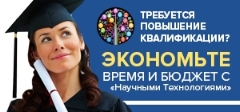| |
The article deals with the issues of short-term lending to integrated industrial structures and business units (industrial enterprises) for current and non-current assets in order to increase the economic sustainability of their development. As a result, an enlarged balance sheet of business units was developed in case of obtaining a short-term loan. On the basis of this balance, an economic and mathematical model for determining a short-term loan is formed, which ensures the financial stability of business units of integrated industrial structures and differs in the composition of the desired, simulated and exogenous parameters. On the basis of this model, an algorithm for determining a short-term loan for current and non-current assets has been developed, which allows, depending on the given values of the initial parameters, to obtain a certain set of feasible solutions. It is shown that the choice of the most effective (optimal) value of a short-term loan for non-current and current assets, taking into account ensuring the financial stability of business units, is associated with the problem of risk management. In this regard, as an optimization criterion, the maximum profit is proposed, taking into account the probabilistic assessment of the sale of products and their cost. Thus, an effective toolkit has been developed for short-term lending in the most promising strategic areas for the development of both business units and an integrated industrial structure as a whole in order to increase their sustainable economic development.
Keywords:modeling, economic stability, short-term credit, algorithm, non-current and current assets, integrated structures
|






